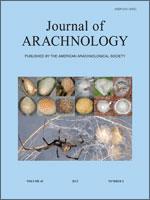Establishment of communities is a dynamic process initiated by immigration. Therefore, movements of individuals within a metacommunity are important for maintaining and increasing species distribution. We present results of a small landscape-level experiment that manipulated habitat size and diversity. We examined the rates of colonization of spider species, and the richness, abundance and composition of foliage-dwelling spiders. Estimation of colonization rates was based on maximum likelihood. The experimental landscape was composed of five blocks with four patches (two large, 1 m2; two small, 0.25 m2). Less diverse patches had seedlings of one plant species, whereas more diverse patches had four species with diverse structures. Eight periodic censuses of spiders arriving in the patches were performed (average interval between censuses, 28 days). The initial composition of colonizers was significantly different from the final composition, but rates of colonization did not differ between sizes and diversities, or their interaction. Abundances of spiders were positively influenced by patch size. Compositions in each temporal sample were determined by differences in the species pool migrating and arriving at an experimental landscape irrespective of habitat size or diversity. Larger patches were more likely to receive more colonists representing a wider array of species than small patches. The probability of colonization was independent of patch size and diversity, which contradicts theoretical predictions. The results highlight the high colonization capacity of spiders on spatial and temporal scales.
How to translate text using browser tools
1 August 2013
Assessment of the probability of colonization of local spider communities in an experimental landscape
Ronei Baldissera,
Everton N. L. Rodrigues,
Sandra M. Hartz
ACCESS THE FULL ARTICLE

The Journal of Arachnology
Vol. 41 • No. 2
August 2013
Vol. 41 • No. 2
August 2013
Community composition
immigration
passive sampling
temporal variation




